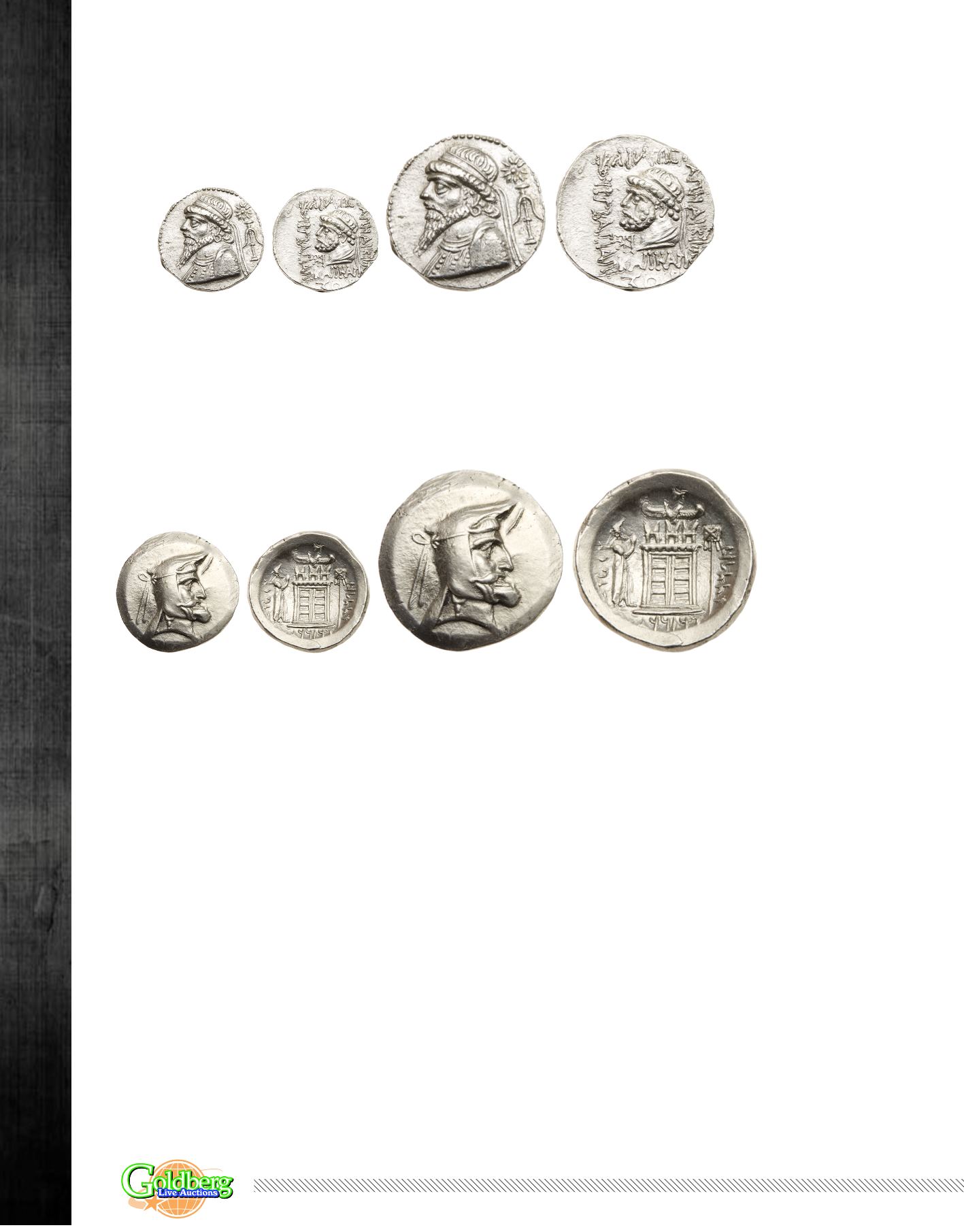

133
|
Session Five - Tuesday, February 14th 10:00am PST
R
ARE
D
ATED
E
LYMAIAN
K
INGDOM
S
ILVER
T
ETRADRACHM
Enlargement
1880 Elymaian Kingdom. Kamnaskires V. Silver Tetradrachm (11.29 g), ca. 54/3-33/2 BC
. Seleukeia on the Hedyphon, uncertain date, but
probably SE 272 (41/0 BC). Diademed and draped bust of Kamnaskires V left, sporting long beard; behind, star above Seleukid anchor mintmark.
Reverse:
BACI
E
C KAMNACKIPOY TOY E
BACI
E
C KAMNACKPOY (degraded and partially illegible), diademed bearded bust of uncertain
Kamnaskirid left; in exergue,
OB. Cf. Haaff type 9.1 (date not recorded); cf. Sunrise 479-80.
Rare with full date. Choice Extremely Fine
.
Estimate Value ....................................................................................................................................................................... $1,500 - 2,000
W
ONDERFUL
A
UTOPHRADATES
I S
ILVER
T
ETRADRACHM
, 3
RD
CENTURY
BC
Enlargement
1881 Kingdom of Persis. Autophradates (Vadfradad) I. Silver Tetradrachm (16.73 g), 3rd century BC
. Persepolis. Diademed and head of
Autophradates I right, wearing kyrbasia and pendant earring.
Reverse:
Fire Temple; to left, king standing right, in prayer; to right, standard;
above, half-figure of Ahura-Mazda. Klose & Müseler -; Alram 540 & 542; Sunrise 570.
Superb Extremely Fine
.
Estimate Value ....................................................................................................................................................................... $3,000 - 4,000
The native Iranian rulers of Persis in the early third century BC are a very controversial bunch. Some scholars see them as loyal Seleukid governors
of a troubled territory for Seleukos I and Antiochos I while others have interpreted them as rebels attempting to revive an independent Persian
realm at the expense of the Seleukid Empire. Most of the coinage is overstruck on Seleukid host coins, which is tantalizing enough, but the Persid
series is most interesting for its use of Greek norms of numismatic representation while featuring distinctly Iranian iconography. As on the majority
of Greek coins (Syracuse and Corinth are the big exceptions), the obverse is dominated by a portrait head, in this case that of Autophradates I
wearing the kyrbasia headdress commonly worn by Persian satraps. The similarity between this portrait and the image of the satrap Tiribazos (ca.
388-380 BC) on coins of Mallos is striking. The reverse is in line with general Greek custom in its use of a full figure design, but here the figure is
not a god or hero as is most commonly the case, but rather Autophradates I worshipping before a Zoroastrian fire altar, with a figure of the chief
deity of Zoroastrianism, Ahura-Mazda, rising above.



















